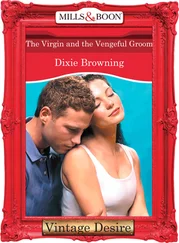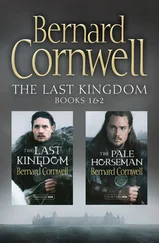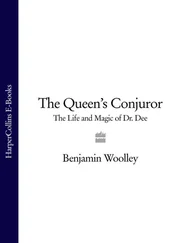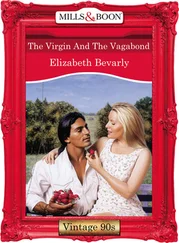After the magnificent Queen Appamattuck, Archer found ‘King Pamunkey’ a ridiculous figure, ‘so set [upon] striving to be stately as to our seeming he became a fool’. He claimed to come from a ‘rich land of copper and pearl’, and showed off a pearl necklace and a sample of copper ‘the thickness of a shilling’ which Archer managed to bend round his finger ‘as if it had been lead’. Affecting nonchalance at this information, the English asked what other commodities his land offered. The king obligingly boasted it was also ‘full of deer’ though added that ‘so also is most of all the kingdoms’.
Archer called the venue for the encounter with Opechancanough ‘Pamunkey’s Palace’, mocking the king’s extravagant claims, and ignoring Navirans’s hints that the name was inappropriate.
Continuing their journey home, they spent the night at the ‘low meadow point’ where they had anchored the first night of the expedition, 18 miles away from the settlement. The following morning, they went ashore with Navirans. They encountered a hunting party of ten or twelve Indians who were camping on the shore, and Navirans arranged for them to go fishing for the English. ‘They brought us in a short space a good store,’ Archer noted, who accounted them ‘good friends’.
Then, without warning or explanation, Navirans ‘took some conceit’ of the English, and refused to go any further with them. ‘This grieved our captain very deeply,’ Archer observed, ‘for the loving kindness of this fellow was such as he trusted himself with us out of his own country.’ By now, Newport imagined that he had managed to establish a rapport with the Indians, that his diplomacy had been embraced, his honourable intentions accepted, the superiority of his weaponry acknowledged and admired. Navirans’s sudden change of heart punctured this presumption. Newport ordered the shallop’s immediate return to Jamestown, ‘fearing some disastrous hap at our fort’.
They arrived back on 27 May, to find the settlement in chaos. It transpired that the day before, two hundred Indian warriors had mounted a sustained attack. Following his meeting with Newport, Opechancanough had evidently decided the English presence must be eliminated, before it became permanent.
At the time of the attack, the settlers had been planting corn in the newly cleared fields. Most of their weapons were still packed in ‘dryfats’, waterproof storage casks, so they only had a few pistols and swords to defend themselves. As the ranks of Indian warriors descended upon them, they had been forced to run for cover, to few finding shelter behind the island’s single defensive bulwark. Led by President Wingfield, all five council members apparently put up a fight with hand weapons, but were forced to retreat. In the ensuing skirmish, which ‘endured hot about an hour’, one boy was slain and as many as seventeen labourers wounded. Every single member of the council sustained injuries, except Wingfield, who had a miraculous escape from an arrow which passed through his beard. According to later reports, the entire company would have been slain, had not the sailors loaded one of the ships’ cannons with a ‘crossbar’ (round shot with a spike embedded in it), and fired it towards the Indian position. The projectile had hit a tree, bringing down one of its branches, which apparently fell among the attacking Indians and ‘caused them to retire’. 23
‘Hereupon the president was contented the fort should be palisaded,’ Smith noted dryly.
George Kendall was put in charge of designing the defences, Archer of laying out the street plan for the town. The best-known work in English on military architecture at the time was a translation of a French work by William de Bellay called The Practice of Fortification . It was sufficiently influential for Christopher Marlowe to lift a section verbatim for his popular first play, Tamburlaine the Great , and for Percy’s brother the Earl of Northumberland to hold a copy in his library. Rule one for Bellay was: ‘the figure triangular is not to be used at all’ in the ‘delineation’ of a fort, because it resulted in long, penetrable walls and vulnerable bulwarks or ramparts at each corner. Similar advice had been offered to the Roanoke settlers, who had been told to build their fort in the shape of a pentangle. Despite these warnings, Kendall chose a triangular shape. This was possibly because the river acted as a natural defence, and de Bellay had also advised that ‘if any part [of the fort’s proposed location] may be better assured of the situation than the rest’, that was the side to have any sharper angles or longer walls. Kendall proposed putting the fort’s longest side, which measured 140 yards, along the waterfront, with two shorter sides, 100 yards each, jutting into the island, enclosing an area totalling just over an acre. 24
Meanwhile, Archer had been working in the pinnace, drawing up plans for the town that would lie within the defensive walls. Wingfield had gone to inspect them. He rejected Archer’s work, and a confrontation ensued, defeating the president’s efforts to give Gosnold’s restless, rebellious friend a useful role. Alternative plans were drawn up, which, from archaeological remains, appear to have allowed for a row of barracks next to the southern palisade, officers’ dwellings on the western side, a storehouse to the east, and a church in the middle.
The labourers worked around the clock, with the reluctant help of the ships’ crews, and within days Kendall’s design was taking shape. The curtain wall was made of rows of split logs, sunk into a ditch that was backfilled to keep them upright. At each corner, large crescent-shaped bulwarks were built using the same method, upon which the company’s carpenters constructed stout platforms to carry lookouts and artillery. Winches and cranes were erected to lift some of the ‘four and twenty pieces of ordnance’ brought from England, and soon the bulwarks bristled with culverins, enormous cannons with barrels 11 foot long, capable of shooting 18-pound shot over a distance of nearly 2,000 foot. 25
While excavating around the neck of land connecting the island to the mainland, workers found a stream flowing down a small bank. In the glint of the trickling water they saw what looked like yellow crystals. Captain John Martin was immediately summoned to inspect what they had found. Samples were taken and, using apparatus brought from London, he performed an assay or test to see if any metal could be drawn off. The news that he had managed to extract a small amount of what appeared to be gold ‘stirred up in them an unseasonable and inordinate desire after riches’. A barrel was filled with soil taken from the surrounding area, for testing back in England. 26
Meanwhile, the Indians kept up their attacks. As the fortifications rose, their tactics changed from full-frontal assaults to harassment. On Friday 29 May, they managed to shoot forty or so arrows ‘into and about the fort’ from the cover of the surrounding woodland, before being repulsed by a volley of musket fire. ‘They hurt not any of us,’ Archer wrote, ‘but finding one of our dogs, they killed him.’ The following Sunday, while feverish construction continued, ‘they came lurking in the thickets and long grass’. Eustace Clovill, a hapless offspring of Norfolk gentry, was found ‘straggling without the fort’, and was shot six times. His brief moment in history came when he staggered back to the fort with the arrows still stuck in his body, and shouted, ‘Arm! Arm!’ before collapsing. He died eight days later.
On Thursday 4 June, as dawn was breaking, one of the settlers left the fort ‘to do natural necessity’ in the latrine just beyond the palisade. As he squatted on the ground, he was shot with three arrows by Indians who had ‘most adventurously’ crept under the bulwark blocking access to the island.
Читать дальше












